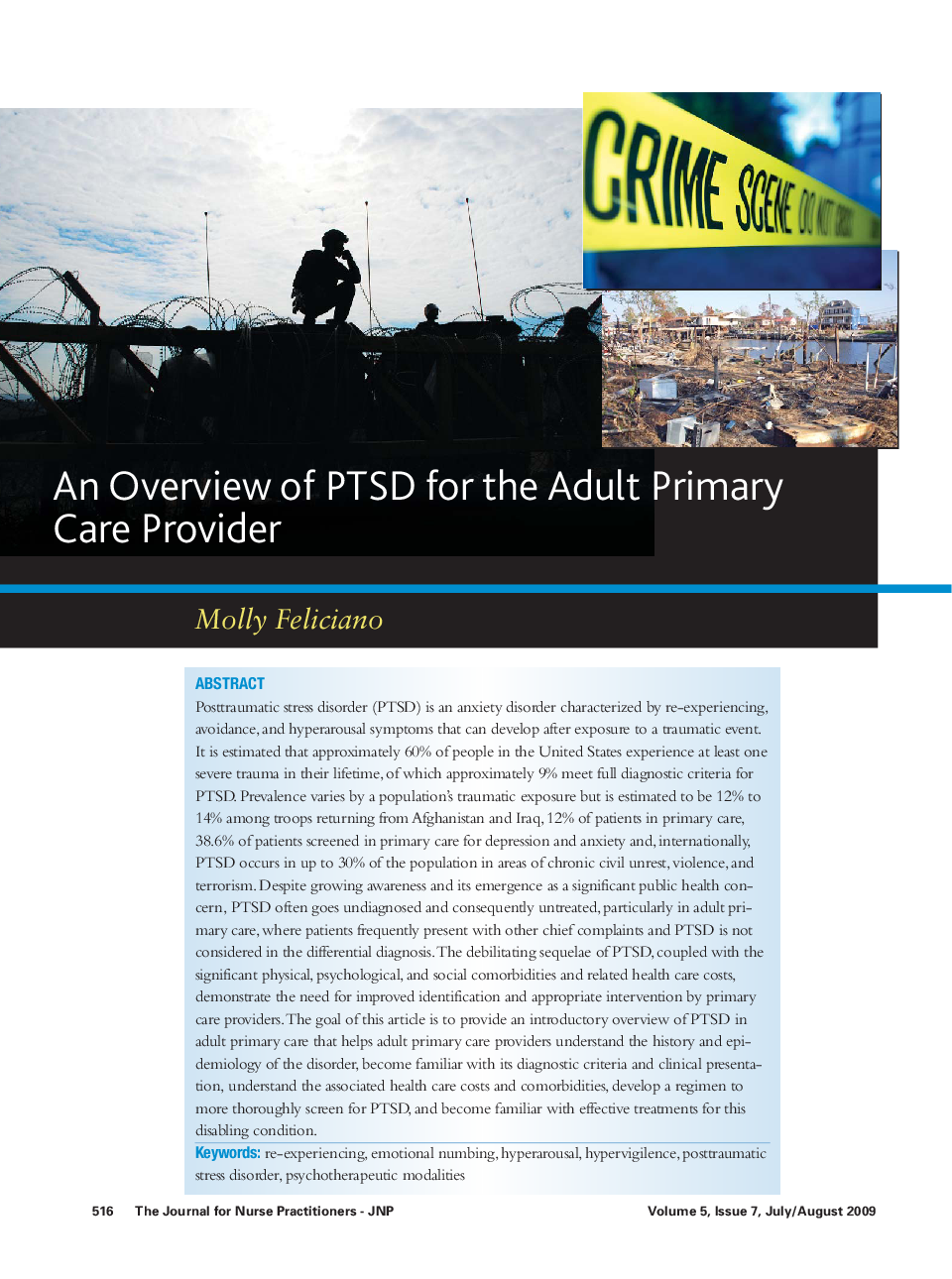| Article ID | Journal | Published Year | Pages | File Type |
|---|---|---|---|---|
| 2661107 | The Journal for Nurse Practitioners | 2009 | 7 Pages |
Posttraumatic stress disorder (PTSD) is an anxiety disorder characterized by re-experiencing, avoidance, and hyperarousal symptoms that can develop after exposure to a traumatic event. It is estimated that approximately 60% of people in the United States experience at least one severe trauma in their lifetime, of which approximately 9% meet full diagnostic criteria for PTSD. Prevalence varies by a population's traumatic exposure but is estimated to be 12% to 14% among troops returning from Afghanistan and Iraq, 12% of patients in primary care, 38.6% of patients screened in primary care for depression and anxiety and, internationally, PTSD occurs in up to 30% of the population in areas of chronic civil unrest, violence, and terrorism. Despite growing awareness and its emergence as a significant public health concern, PTSD often goes undiagnosed and consequently untreated, particularly in adult primary care, where patients frequently present with other chief complaints and PTSD is not considered in the differential diagnosis. The debilitating sequelae of PTSD, coupled with the significant physical, psychological, and social comorbidities and related health care costs, demonstrate the need for improved identification and appropriate intervention by primary care providers. The goal of this article is to provide an introductory overview of PTSD in adult primary care that helps adult primary care providers understand the history and epidemiology of the disorder, become familiar with its diagnostic criteria and clinical presentation, understand the associated health care costs and comorbidities, develop a regimen to more thoroughly screen for PTSD, and become familiar with effective treatments for this disabling condition.
